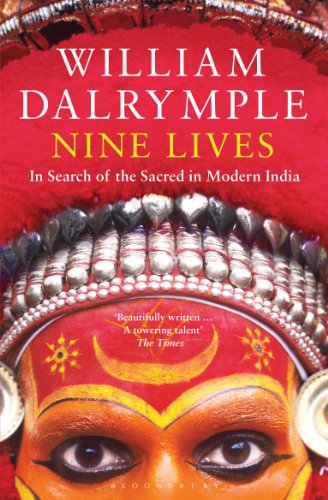An acknowledged master of the genre of travel writing, William Dalrymple once again brilliantly manages to hold the reader’s undivided attention with his most recent book, Nine Lives. In a skilfully restrained register, he contextualizes the diverse religious traditions of India and Pakistan within the framework of social changes catalysed by modernization and globalization, changes he refers to as ‘huge earthquakes’ (p. xii). The book contains nine non-fictional narratives, personal histories orally shared with the author and reproduced in the voice of each protagonist, ‘with each life representing a different form of devotion…’ (p. xv) The author’s own extensive travels through India and Pakistan in order to collect these fascinating accounts broadens the scope and range of our understanding of the extraordinary lives of these ‘ordinary’ people.
What is unusual about this book, as the author himself points out, is that travel narratives generally tend to highlight the traveller’s perceptions while ‘reducing the people (who are) met… to objects in the background’ (p. xiv). Dalrymple inverts this tendency; he ‘keeps the narrator firmly in the shadows’, foregrounding the lives of the subjects ‘and placing their stories firmly on centre stage’ (p. xiv). All the nine ‘lives’ are offered in a controlled, gripping flow that the author interweaves with ample historical, social and anthropological detail. The stories offer perspectives on each protagonist’s community, economic struggles and the local / national politics of caste and gender. The narratives are a carefully constructed amalgam of biography and autobiography: the frame text in each case, rendered in the author’s own voice, describes the symbiotic relationship of the social margins to the mainstream, of heterodoxy to orthodoxy, of the traditional to the contemporary, and of the metaphysical to the existential; each personal account is set within the frame text like the stone in a ring.

